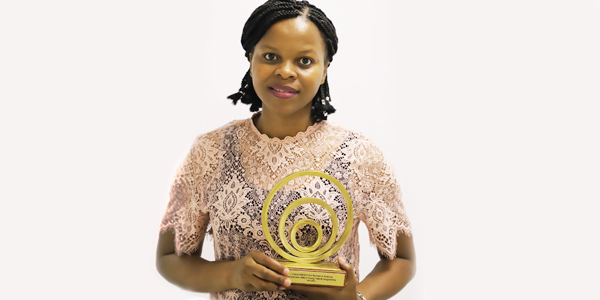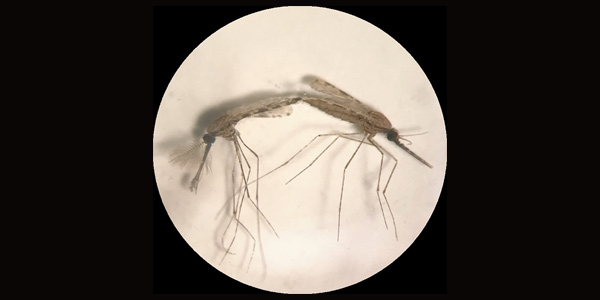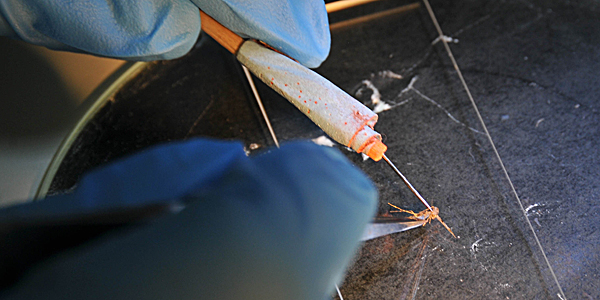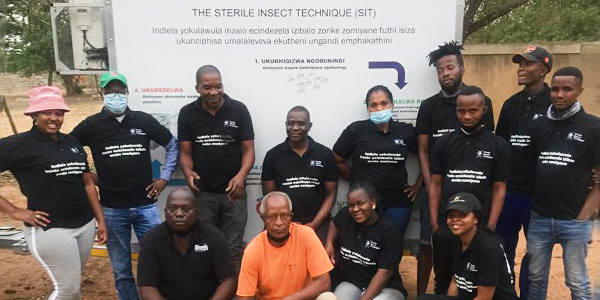Mapping mosquitoes to combat malaria
- Wits University
Theresa Mazarire in the Wits Institute for Malaria (WRIM) combines environmental science and public health to control malaria mosquitoes.
She was one of just 20 laureates selected from 440 applications in 17 African countries to receive the L’Oréal-UNESCO For Women in Science Sub-Saharan Africa Young Talents Award.

Mazarire came to Wits in 2016 to pursue her MSc in Geographic Information System (GIS) mapping and Remote Sensing.
Geographical information systems are able to integrate, store, analyse and display geographical data. GIS incorporates spatial data (geographical features) in the form of maps, and descriptive data in the form of relational databases linked to mapped features.
GIS is used to understand patterns, relationships, and geographic contexts based on their location and spatial characteristics. It is known for its sophisticated spatial statistical analysis and visualisation capabilities, which can be applied as an intelligent and accurate decision-making tool in a wide range of global phenomena.
“My GIS skills cut across all fields; for example, it can be applied in peace keeping initiatives and for life-saving aid provisions such as those in the Russia/Ukraine conflict-affected communities, in the humanities, in public health for disease mapping, as well as in agricultural industry to improve food security,” says Mazarire.
Her Master’s, awarded in 2019 by the Wits School of Geography, Archaeology, and Environmental Studies (GAES) focused on mapping crop types to inform strategies for precision agriculture, crop monitoring, crop yield estimation, and food security management.
From maize to mosquitoes

“For my PhD, I wanted to do something in public health, and improve the way that we study and understand environmental issues that cause diseases,” says Mazarire, now in the third year of her doctoral studies in the Division of Virology, School of Pathology at Wits and based at the Vector Control Research Laboratory, National Institute for Communicable Diseases (NICD).
Mazarire’s doctoral research focuses on malaria vector control. A vector is an organism that carries and transmits an infectious disease, as mosquitoes do for malaria.
“I use geotechnology to study the interaction between the environment and mosquitoes,” explains Mazarire.
Her research seeks to analyse the geographical phenomena that contribute to mosquitoes’ prevalence and spatio-temporal distribution over space and time.
This is done by using satellite remote sensing data to map the climate, land cover and ecological variables that promote the emergence/survival of malaria vectors in an environment.
"The success of vector control strategies depends on timely and accurate knowledge of the distribution of vectors spatially and temporally. This knowledge is crucial in designing mosquito control strategies and developing suitable frameworks for monitoring and evaluating the success of control approaches."
It is also essential to understand the interaction between the environment and the mosquito so that vector control strategies are specifically targeted where they are needed, saving resources and time and thereby aiding to eliminate malaria.
Mosquito-hunter
“My PhD research forms part of a bigger project in which male mosquitoes [male mosquitoes are not involved in malaria transmission] are mass-reared in the laboratory, sterilised and released into the wild so that when they mate with native wild females, the offspring from such mating are not viable and thus do not transmit malaria. This novel technology is called the ‘Sterile Insect Technique’,” explains Mazarire.

The Sterile Insect Technique (SIT), often referred to as ‘birth control’, is an environmentally-friendly biological control method based on population suppression. The technique involves releasing mass-reared, sterile male insects into the wild. These released sterile males compete with wild males to mate with native females. Females that mate with a sterilised male produce unviable offspring, thus reducing the next generation’s population.
Mazarire says the most exciting thing about her research is working with these little critters. “We keep live mosquito colonies at the NICD, and when you see a mosquito, you can’t just kill it – you have to do further analysis on it,” she laughs. “My field research is in Mamfene in KZN. We go there to catch mosquitoes. I like it! It’s laborious, but you actually then understand their environment.”

Women in science for sub-Saharan Africa
Mazarire is jointly supervised by Dr Givemore Munhenga, a Principal Medical Scientist in the Vector Control Reference Laboratory, Centre for Emerging, Zoonotic and Parasitic Diseases at the NICD, and Professor Solomon Newete, a Senior Researcher at the Agricultural Research Council-Natural Resource and Engineering, and a Visiting Associate Professor in the School of Animal, Plant and Environmental Sciences (APES) at Wits, for GIS and remote sensing data analysis
Munhenga heads the SIT project in which Mazarire’s PhD studies are nested. He also suggested that Mazarire apply for the L’Oréal-UNESCO For Women in Science Sub-Saharan Africa Young Talents Awards.
“These awards are given to women involved in novel science research in sub-Saharan Africa that is going to help communities,” says Mazarire. “Dr Munhenga told me about the awards originally and encouraged me to apply.”
Mazarire was named an awardee in 2021 after her second attempt. She is one of 20 laureates selected from 440 applications in 17 African countries.
Science is the key to sustainable development and economic growth, says Mazarire, who advocates for women scientists to help lead the transformation of global health systems.
‘Bad air’ malaria
In 2021, there were an estimated 241 million malaria cases globally with more than 95% of these cases reported in Africa.
Globally every year more than 200 million acute malaria episodes occur and about 438 000 people, mainly in sub-Saharan Africa, die because of malaria.
The first reports of human malaria infections appeared in Chinese medical texts as far back as 2700 BC. Initially it was thought that the air around salt marshes played a role in the spread of the disease, hence the name malaria, (derived from the Italian words ‘mal’ [bad] and ‘aria’ [air]).
“What I like about working with mosquitoes is that they’re such small and minute organisms, but they’re making a big difference in people’s lives through malaria. People die from this,” says Mazarire – who has good reason to work towards ridding the world of malaria: She married in October 2021 and is expecting a baby in June.
Malaria transmission in South Africa is seasonal, with malaria cases starting to rise in October, peaking in January and February, and waning towards May.
In this country, malaria is mainly transmitted along with the border areas, and malaria is endemic in some parts of Limpopo, Mpumalanga and KwaZulu-Natal). Approximately 10% of the population are at risk of contracting malaria, which can be fatal if not diagnosed early.
In her (free) time, the Zimbabwean native who now lives in Pretoria enjoys “roaming around the internet to see what’s happening in international affairs” and applying GIS to all sorts of global phenomena – for fun! Mazarire also consults to a climate change non-profit, Rabia Transitions Initiative, on how financial institutions can manage climate change in South Africa.

